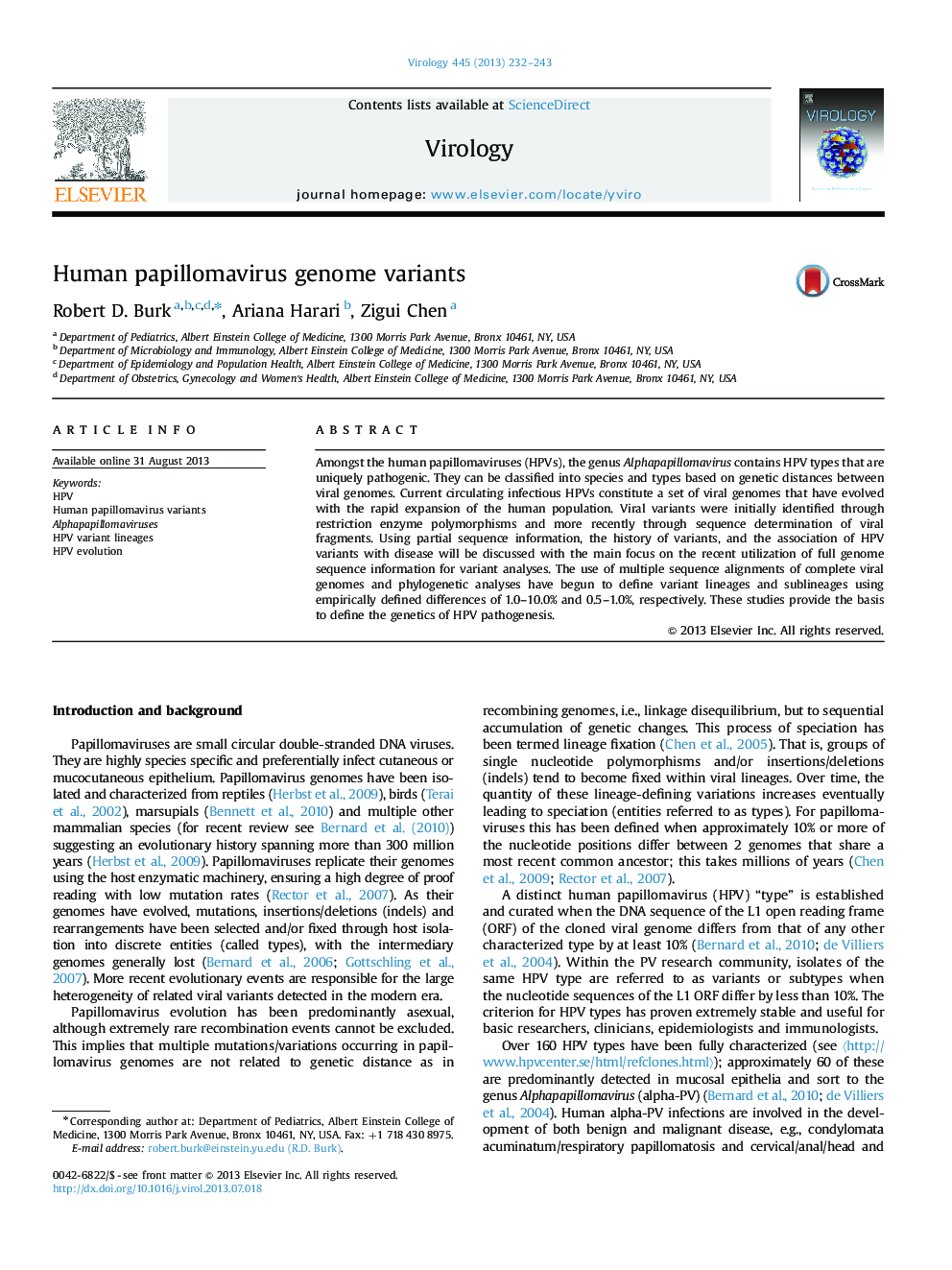| Article ID | Journal | Published Year | Pages | File Type |
|---|---|---|---|---|
| 6140824 | Virology | 2013 | 12 Pages |
â¢HPV variants of a type are defined as sharing >90% nucleotide identities.â¢Variant lineages of a given type differ by approximately 1-10%.â¢Variant sublineages of a given type differ by approximately 0.5-1.0%.â¢This review summarizes 8 species groups, 29 types, 177 variant/subvariant lineages.
Amongst the human papillomaviruses (HPVs), the genus Alphapapillomavirus contains HPV types that are uniquely pathogenic. They can be classified into species and types based on genetic distances between viral genomes. Current circulating infectious HPVs constitute a set of viral genomes that have evolved with the rapid expansion of the human population. Viral variants were initially identified through restriction enzyme polymorphisms and more recently through sequence determination of viral fragments. Using partial sequence information, the history of variants, and the association of HPV variants with disease will be discussed with the main focus on the recent utilization of full genome sequence information for variant analyses. The use of multiple sequence alignments of complete viral genomes and phylogenetic analyses have begun to define variant lineages and sublineages using empirically defined differences of 1.0-10.0% and 0.5-1.0%, respectively. These studies provide the basis to define the genetics of HPV pathogenesis.
